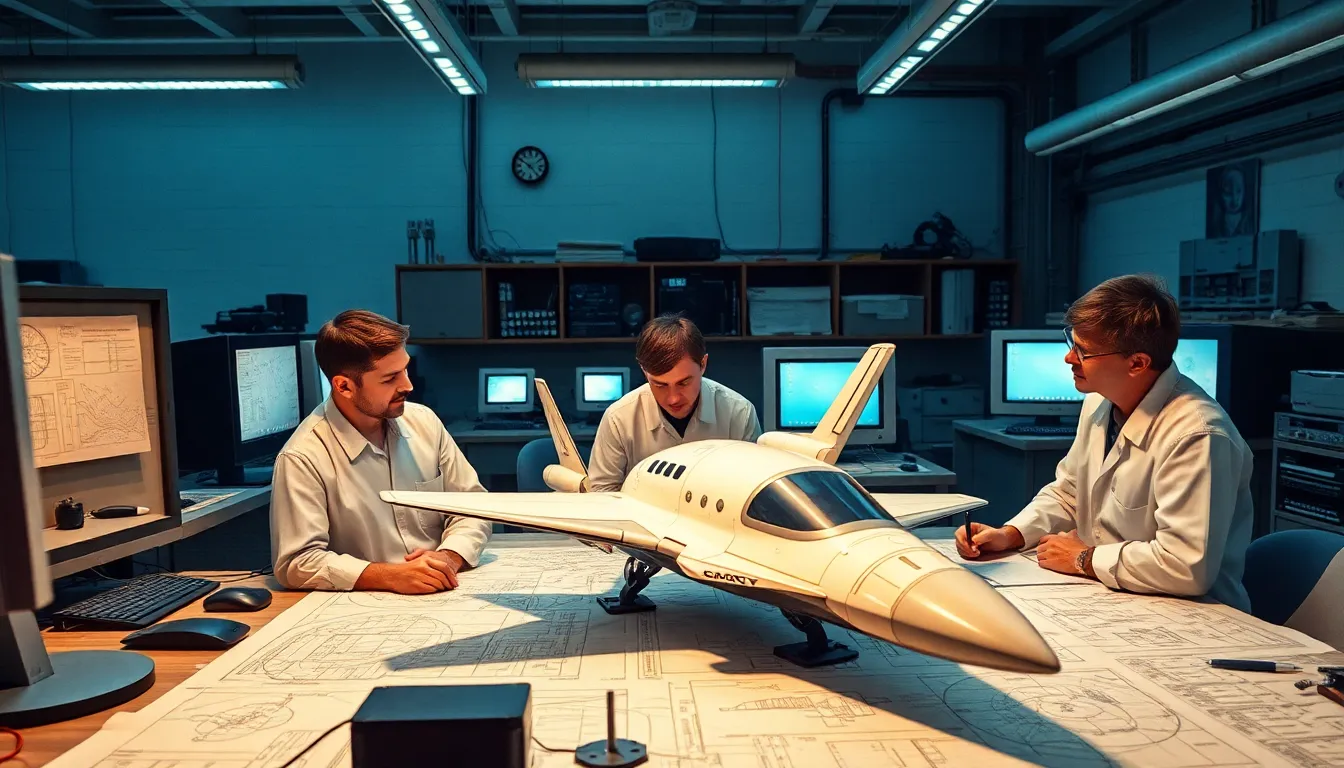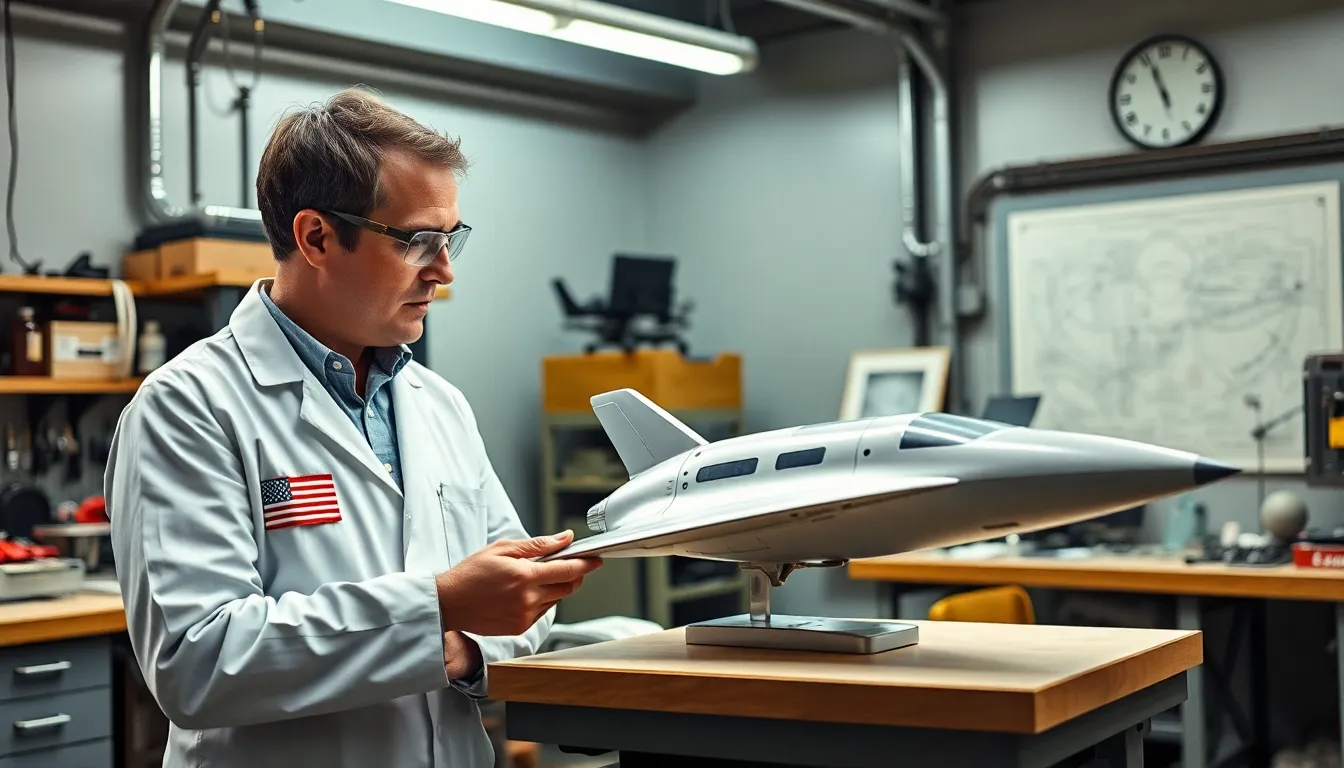Spacecraft design isn’t just rocket science; it’s a blend of creativity, engineering, and a dash of cosmic whimsy. Imagine crafting a vehicle that can withstand the harsh environment of space while making it look cooler than your neighbor’s new sports car. From sleek shapes to innovative materials, every detail counts when it comes to launching humans and robots into the great unknown.
As we venture deeper into the cosmos, the stakes get higher and so does the need for smart design. Whether it’s ensuring astronauts have enough snacks or figuring out how to keep them from floating away, the challenges are as vast as space itself. Join the journey into the fascinating world of spacecraft design, where imagination meets precision, and discover how the next generation of explorers will boldly go where no one has gone before.
Table of Contents
ToggleOverview of Spacecraft Design
Spacecraft design encompasses a meticulous blend of creativity and engineering, aimed at developing vehicles suited for the harsh environment of space. The process begins with conceptualizing the mission objectives, which shapes the design requirements and functionality. Engineers prioritize innovative materials that withstand extreme temperatures, radiation, and vacuum conditions.
Critical to the design is the structural integrity of the spacecraft. Designers create frameworks using lightweight yet strong materials, such as titanium and advanced composites. Electronics and systems require careful placement to ensure optimal performance and accessibility.
The comfort and safety of astronauts play a vital role in spacecraft design. Life support systems, radiation shielding, and ergonomic interiors address health and usability concerns. Ventilation, temperature control, and waste management systems ensure a livable environment during missions.
Testing emerges as a crucial phase in the design process. Designers employ simulations and prototypes to validate performance and reliability. Each iteration helps identify potential issues, enhancing the spacecraft’s resilience.
Collaboration between interdisciplinary teams strengthens the design process. Scientists, engineers, and mission planners work together to integrate requirements and solve complex challenges. Incorporating feedback from previous missions further refines the process, ensuring continuous improvement.
Ultimately, the design of a spacecraft requires a balance of innovation, functionality, and safety. Each decision impacts the vehicle’s performance and the success of its mission in space exploration.
Key Principles of Spacecraft Design


Spacecraft design encompasses essential principles that influence performance, safety, and mission success. These principles guide engineers in creating robust vehicles for space exploration.
Aerodynamics and Mechanics
Aerodynamics significantly impacts spacecraft functionality during atmospheric exit and re-entry phases. Engineers analyze airflow patterns to devise shapes that optimize stability and minimize drag. Mechanics plays a crucial role in structural integrity, where load distribution is fundamental for resisting the immense forces experienced during launch and landing. By utilizing computer simulations, analysts can predict the behavior of spacecraft under varying conditions, ensuring reliability and performance.
Materials and Construction
Choosing appropriate materials is vital for spacecraft durability and efficiency. Advanced composites, titanium, and aluminum alloys are often preferred for their lightweight and strength properties. Construction techniques, such as precision welding and additive manufacturing, enhance structural performance while minimizing weight. Safety features incorporate radiation shielding and thermal protection systems to safeguard astronauts and equipment. Engineers prioritize these materials and construction methods to create vessels capable of enduring a wide range of environmental challenges.
Types of Spacecraft
Spacecraft come in various types, each designed for specific purposes and missions. Understanding these types reveals the complexity and innovation involved in spacecraft design.
Crew Spacecraft
Crew spacecraft transport astronauts to and from space. These vehicles contain life support systems, ensuring a breathable atmosphere and manageable temperature. The design focuses on safety features like radiation shielding and secure seating to withstand launch and landing forces. Spacecraft such as the NASA Orion and SpaceX Crew Dragon exemplify advanced technology in crew transport. Engineers prioritize comfort, integrating ergonomic interiors for astronauts during long-duration flights. Additionally, thorough testing during simulations validates performance under extreme conditions, providing assurance of reliability.
Uncrewed Spacecraft
Uncrewed spacecraft operate without human presence, serving diverse roles like scientific research and satellite deployment. These vehicles include probes like Voyager and landers such as Mars Curiosity, designed to gather data from distant celestial bodies. Engineers focus on automation, employing advanced sensors and AI to perform tasks autonomously. Satellite missions also fall under uncrewed spacecraft, aiding in communication, weather forecasting, and Earth observation. Structural integrity remains a priority through material selection and design techniques that allow functionality in harsh environments. Mission success often relies on extensive pre-launch simulations to guarantee reliability and performance.
The Design Process
The design process for spacecraft involves multiple phases that ensure functionality and safety. This structured approach includes concept development and thorough prototyping and testing.
Concept Development
Concept development lays the foundation for successful spacecraft design. Mission objectives guide engineers in determining specific design requirements. Innovations in materials like titanium and advanced composites emerge from this phase, which focuses on strength and weight. Collaboration among interdisciplinary teams sparks creative solutions to complex challenges. Sketches transform into more detailed models, integrating feedback from previous missions. Designers take into account the comfort and safety of astronauts by prioritizing life support and ergonomic features. Ultimately, a clear vision of the spacecraft’s capabilities starts to take shape.
Prototyping and Testing
Prototyping and testing represent critical steps in the design process. Engineers create physical models or simulations to evaluate performance before full-scale production. Each prototype undergoes rigorous testing to ensure reliability in extreme conditions. Simulations help in analyzing aerodynamic behavior during launch and re-entry. Data collected from these tests informs necessary adjustments to design flaws or weaknesses. Engineers prioritize safety features such as thermal protection and radiation shielding during this phase. Collaboration continues as teams refine prototypes based on testing outcomes. This iterative process enhances design integrity, maximizing mission success rates.
Current Trends in Spacecraft Design
Spacecraft design is evolving rapidly, focusing on sustainability and automation amidst technological advancements.
Sustainability and Eco-Friendly Approaches
Sustainable practices are becoming essential in spacecraft design. Innovations include the use of recyclable materials and designs that minimize waste during manufacturing. NASA’s Artemis program emphasizes sustainable lunar exploration, showcasing eco-friendly propulsion systems. Electric propulsion technologies significantly reduce the carbon footprint of missions. Engineers also prioritize energy-efficient life support systems to reduce resource consumption. Research into bio-regenerative life support systems shows promise for long-duration missions, creating a closed-loop environment that recycles air and water. These developments enhance not only the mission’s ecological footprint but also ensure extended mission viability.
Automation and Advanced Technology
Automation plays a crucial role in modern spacecraft design. Advanced robotics and artificial intelligence allow for greater autonomy in uncrewed missions. Engineers integrate AI systems for real-time decision-making during hazards. Remote sensing technologies provide stunning data collection capabilities, facilitating Earth observation and planetary exploration. Moreover, automation enhances spacecraft operation through advanced navigation systems, reducing the need for direct human control. Innovative materials like self-healing composites contribute to increased durability and resilience. These technological advancements streamline operations, improve safety, and expand the possibilities for future exploration missions.




